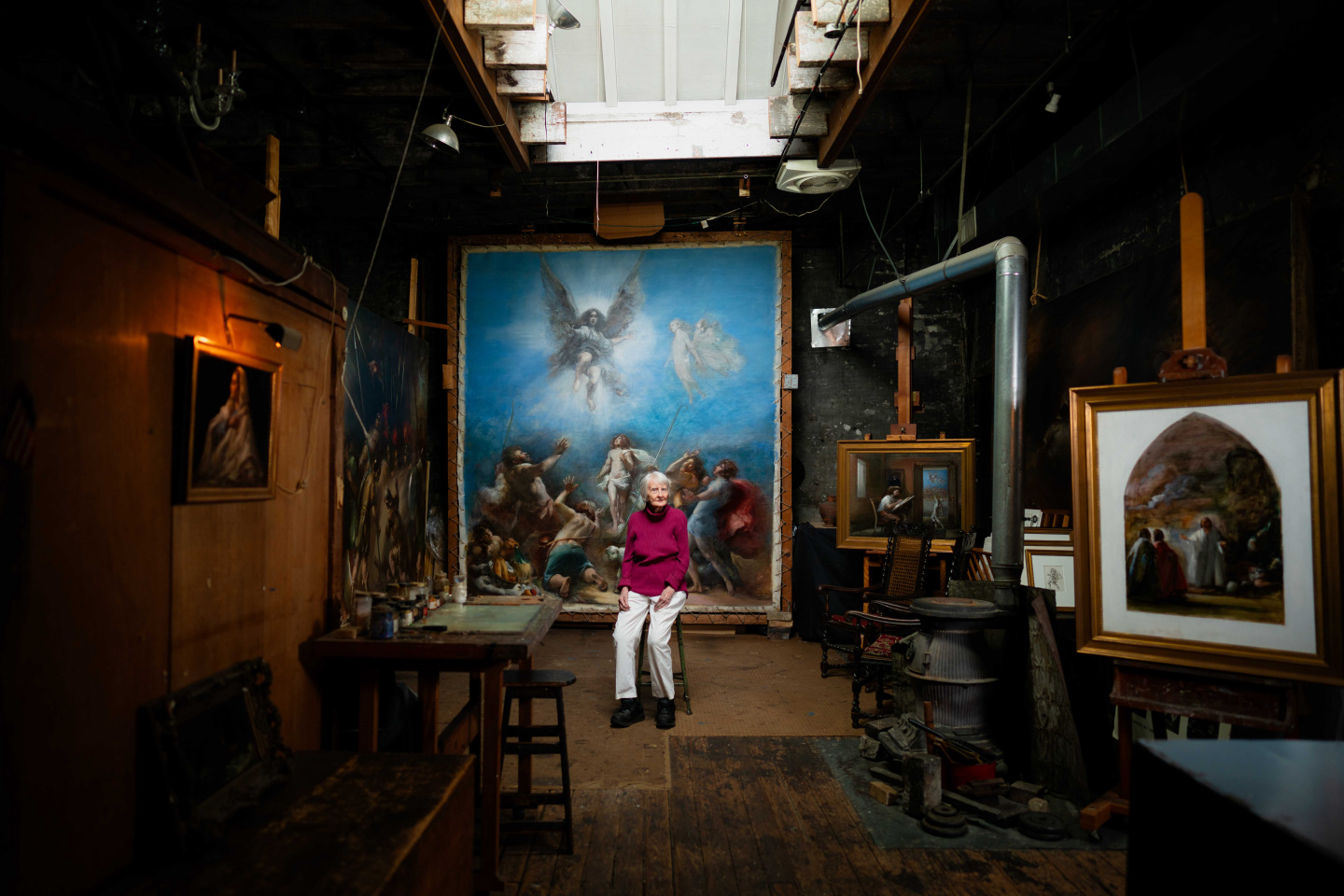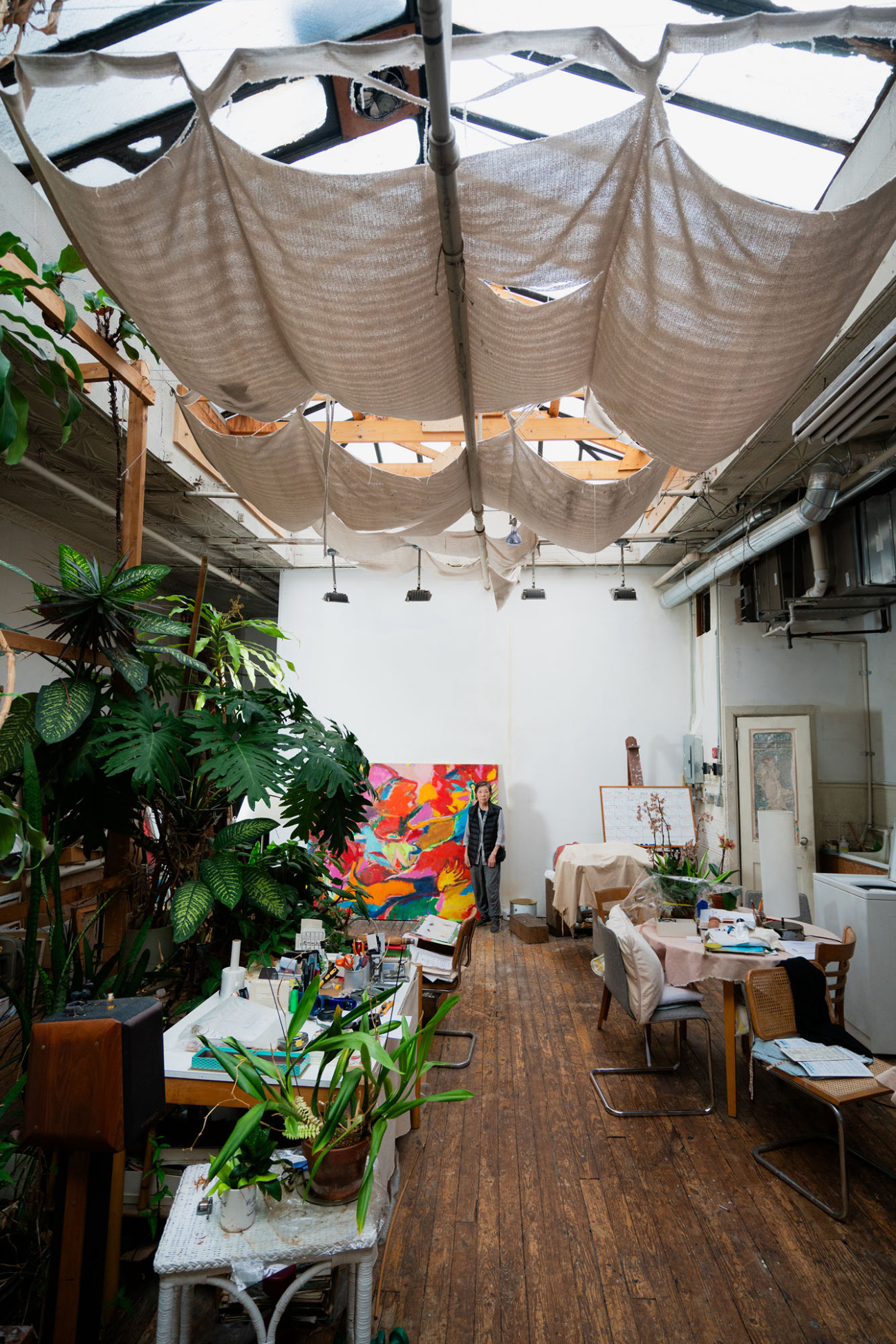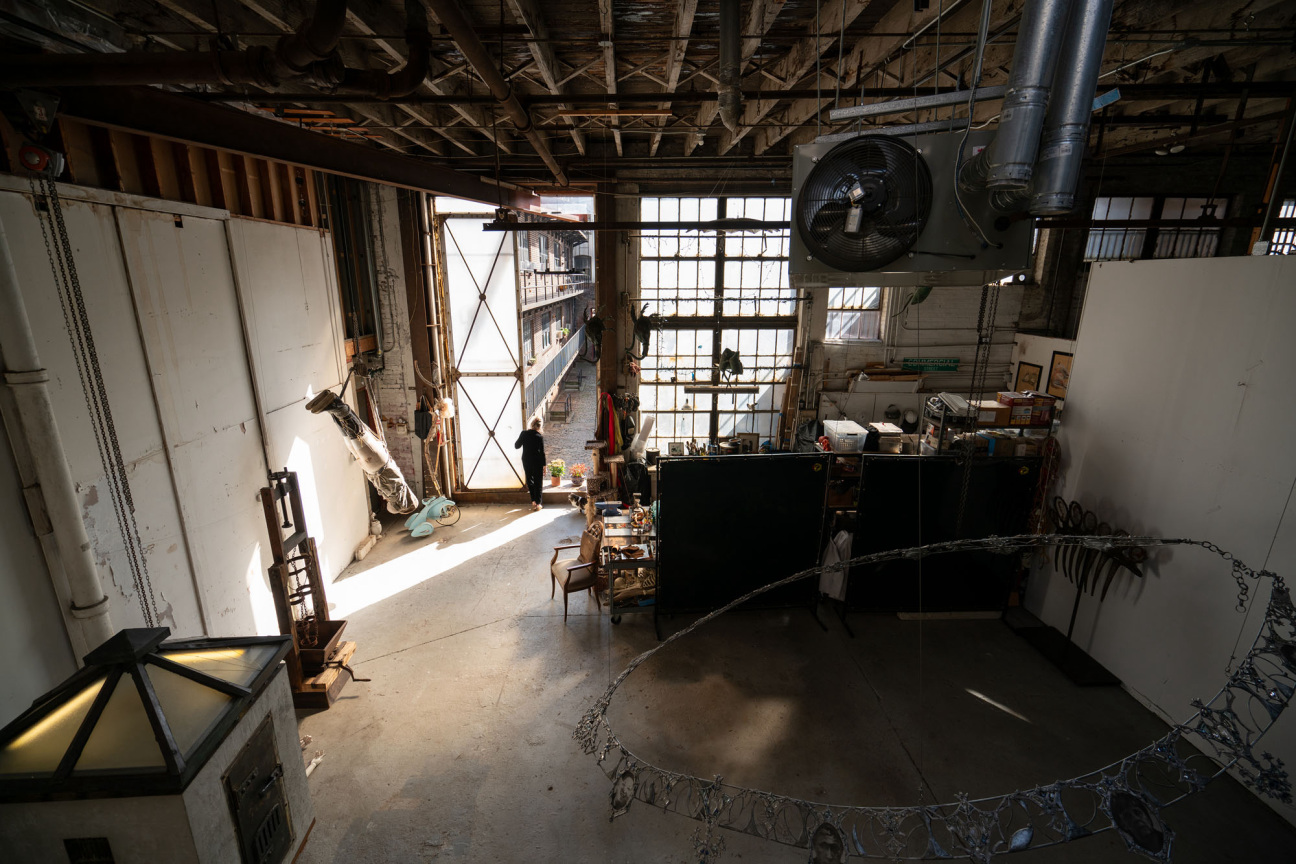
It’s a thought every New Yorker has had: I wonder what it looks like inside that home. Through open windows and cracked curtains, we see glimpses of families eating dinner, friends cooking, people watching TV–interior moments shared with unexpected audiences. Documentary photographer and cinematographer Joshua Charow has lifted the veil on a unique sector of the city’s rich history: artist lofts.
Creatives began renting lofts in the mid-20th century, moving into commercially zoned spaces left empty as industries moved to the suburbs. With low rents, large open-plans, and natural light, lofts were perfect for artists to live and work. However, as areas like Lower Manhattan began to attract new, wealthy tenants, they increasingly faced unscrupulous landlords looking to evict them. Several years ago, Charow learned about the 1982 Loft Law, which allowed artists to gain legal occupancy and stabilized rent in these spaces. Charow made it his goal to photograph the tenants living in the last remaining lofts protected under this law.
What he uncovered over the course of three years are the stories of the artists who gave these lofts life. Photographing over 50 individuals inside their homes, Charow’s project is the subject of Loft Law: The Last of New York City’s Original Artist Lofts, a new photography book published by Damiani Books. Additionally, a selection of Charow’s photographs will be exhibited alongside works by some of the artists themselves in an exhibition at Westwood Gallery, opening May 16. CULTURED spoke with Charow to mark these occasions.

Annabel Keenan: When did you begin working on Loft Law?
Joshua Charow: It began at the end of 2021, but the origins are from earlier. When I was around 14 or 15 living in New Jersey, I started taking the train to New York and became immersed in urban exploring, a subculture of people who climb skyscrapers and visit abandoned subway stations and buildings. I took photographs of these hidden locations for years and became enamored with the city.
One building I visited all the time was a former matzo factory in South Williamsburg with incredible views of Lower Manhattan. A few years ago, I thought it would be a great place for a studio, but I found out that most of the building was empty and the only people left were protected under the Loft Law. That sparked my interest, and I researched the law. The more I looked into it, the more it became my obsession to photograph the last remaining artist lofts.
Keenan: How did you find them?
Charow: I found a map of buildings with Loft Law coverage. It didn’t include names or unit numbers, so I printed hundreds of fliers and went to each building and rang every doorbell and tried to pitch my project as fast as I could.

Keenan: How did they react?
Charow: The reactions were mixed. Sometimes they let me right up, and we’d talk and set a plan to visit another day. There was also paranoia about what my intentions were—like if their landlord had sent me—and how the project could affect them. The tactics landlords used to intimidate and get rid of tenants, especially in the ‘70s and ‘80s, were outrageous. I spoke with people who didn’t have heat or water for months. In one instance, the tenants were told their building was considered unsafe and were given an hour’s notice to leave before being locked out for three years.
Because of these stories, early on, I photographed and interviewed one of the Loft Law lawyers who helps protect tenants. I wanted to learn more about the law and make sure my project wasn’t putting anyone at risk. He was fantastic and became a great resource for the artists who were unsure about participating. It became easier as the project went on, as the people I featured recommended me to their friends.
Keenan: How long did you spend with each person?
Charow: Each visit lasted around an hour and a half to two hours. About half was spent taking photographs and the other half we’d sit down and film an interview. There were many repeat visits.

Keenan: Do you have any favorite stories from the artists?
Charow: I’ll share one story that’s been on my mind. I photographed Carmen Cicero, a 97-year-old painter who has lived on Bowery since 1971. He told me about how he was walking down the street with a large painting in 1959 and he saw the director of the Guggenheim, James Johnson Sweeney. Carmen asked if Sweeney could help carry the painting up to his second-floor gallery. Sweeney did and said “Okay, I helped you carry this, let me see it,” so Carmen unwrapped the painting and Sweeney bought it and featured it in the very first show in the Guggenheim’s Frank Lloyd Wright building. Every artist had anecdotes like this that blew me away.
Keenan: They really are incredible stories. I noticed that many artists commented on the ways in which their neighborhoods changed.
Charow: I’ve thought about this a lot. Some artists detest the changes, others really enjoy aspects of it. Carolyn Oberst and Jeff Way, for example, have been in their Tribeca loft since 1975. Initially, Jeff and another artist rented the top four floors of a building that had been in a fire. Together, they fixed up the ruined building, which was really common and one of the reasons artists were able to rent in the first place—the landlords didn’t have to do the work.
When Carolyn and Jeff arrived in 1975, they had to walk seven or eight blocks just to get milk. The closest place to get food was a warehouse that imported cheese. The workers left wheels of cheese on the loading docks for artists in the area because they knew there wasn’t anywhere to get food. It’s impossible to believe that today. Jeff described living under Loft Law as a parallel universe. The law allowed them to continue making their work, but the artistic community that thrived in the ‘70s and ‘80s is for the most part gone.

Keenan: In the book, there are architectural drawings and floor plans alongside the photographs. Where did these come from?
Charow: The city’s Municipal Archives started a project to restore old architectural drawings of Lower Manhattan a few years ago. I reached out and gave them a list of the buildings I’d photographed and they were able to pull drawings and blueprints from about seven buildings, so those are featured in the book. I felt it was important to include the architectural history, but the artists gave the spaces life.
Keenan: The photographs certainly show this. Every space is clearly lived in, with piles of books and personal touches everywhere.
Charow: Some of the artists have been living in their lofts for decades, so they’ve become time capsules of their lives. The last artist in the book is an 89-year-old woman named Anne Mason. She moved into her fifth-floor walkup in Little Italy in 1966, but her late husband, a painter named Frank Mason, had moved in earlier, in 1958. I met Anne two months before she moved out of the loft.
In the book, I included a photograph of her surrounded by objects from over 60 years of her and Frank’s lives: a 10-foot-tall replica of the Venus de Milo, a 12-foot-long Renaissance-style painting by Frank, and dozens of other works of art. I also included an image of the empty loft after she’d left. Life had been sucked out of the space when she was gone. That’s why I wanted to end with her. This book is about the artists. The spaces are fascinating and beautiful, but without the artist there is no story.










 in your life?
in your life?

